Have you noticed how many butterflies are visiting your garden lately? I see California Sister, Common Buckeye and Western Tiger Swallowtail everywhere I look. We have about area. Many of these occur only in our mountains, forests and chaparral environments. They are easy to attract and make a permanent feature of your landscape. Here’s how.
Butterflies are less efficient than bees as pollinators but have their place in the ecosystem. They do not pick up much pollen on their bodies. Still they visit a variety of wildflowers and other plants to probe for nectar adding beauty and color to the garden. Did you know that butterflies taste with their feet?
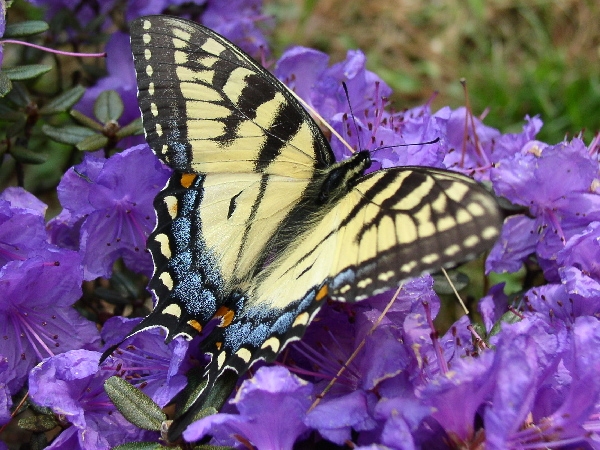
To attract the species of butterfly most common in your area, a butterfly garden should include plants that accommodate all stages of the life cycle ( egg, larvae, pupa and adult ). When both adult nectar and larval host plants are available, they will attract and support a butterfly population. In addition to the right plants, 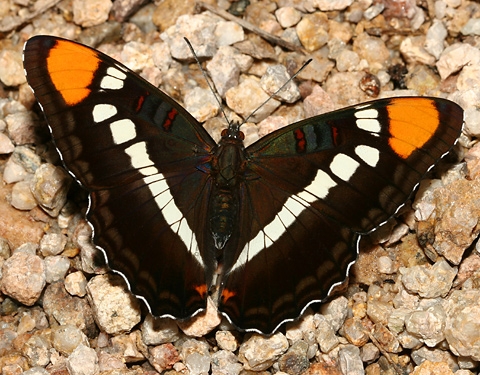 your garden should also have sun, a water source, protection from wind and plants in clusters. When maintaining your garden avoid the use of insecticides, including BT.
your garden should also have sun, a water source, protection from wind and plants in clusters. When maintaining your garden avoid the use of insecticides, including BT.
As adults, most butterflies feed on the nectar of flowers. Some local butterflies, however, like the Mourning Cloak and Red Admiral, feed primarily on rotting fruit or tree sap for moisture and nutrients and the California Sister also feeds on aphid honeydew.
In the larval stage, most butterfly species are limited to a single plant family and occasionally a single genus. To attract more Western Tiger Swallowtails, for instance, provide larval host plants such as willow, sycamore, alder, Big Leaf maple, sycamore, plum and ash. Common Buckeye lay their eggs on mimulus and verbena while California Sister use the coast and canyon live oak. Planting a variety of grasses and shrubs like ceanothus, buckwheat, coffeeberry, bush lupine and manzanita and also perennials like redwood violet, California aster and wallflower to attract a variety of local butterflies. If your garden is near a wild area that naturally supports the caterpillar stage, you can plant just the nectar plants to attract butterflies to your garden.
Filling your garden with nectar producing flowers is the fun part. Adult butterflies rely on sugar-rich nectar for their daily fuel. Different species have different flower color and shape preferences. Many butterflies produce scents that attract the opposite sex and many of these scents smell like the flowers that they are attracted to and visit. The scent of these butterfly pollinated flowers may have evolved as an adaptation to ensure their survival.
Butterflies typically favor flat, clustered flowers that provide a landing pad although larger butterflies can feed on penstemon and salvias while hovering. Butterflies have good vision but a weak sense of smell. Unlike bees, butterflies can see red and are attracted to brightly colored flowers. PInk, red, orange, yellow and purple are the most attractive nectar source colors but they also use blue and white.
Consider the blooming time of each plant. Having plants blooming in the sun for many hours in the day will lengthen your viewing time. Nectar rich flowers include yarrow, aster, verbena, scabiosa, buckwheat, toyon, salvia, erysimum, zinnia, lantana and coneflower.
In addition to nectar, butterflies need a source of water and salts. A patch of mud kept wet year round or a shallow depression lined with pebbles and kept moist will work fine. Also provide some flat rocks for them to bask in the sun in an area protected from the wind by shrubs.
Having your own butterfly garden will enable you to witness close-up the wonder of butterflies and the flowers on which they feed.

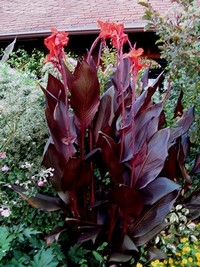 flowers in summer. Plant in full sun or part shade in average soil and supply regular water during growth and bloom.
flowers in summer. Plant in full sun or part shade in average soil and supply regular water during growth and bloom.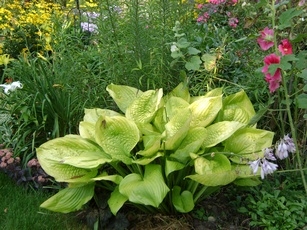 ms almost continually with pale orange bells veined with red. The hummingbirds will love you.
ms almost continually with pale orange bells veined with red. The hummingbirds will love you.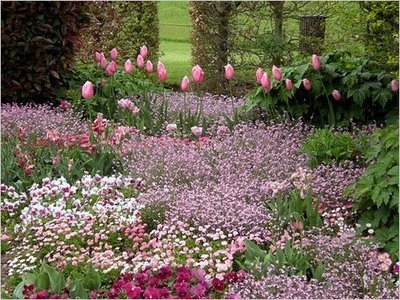 , dynamic and noticeable from afar than cool hues which are more calming and understated. Warm colors advance visually, cool ones recede. So to make a small garden appear larger use cool blues and lavenders in the back with just a touch of scarlet, orange or yellow up close for contrast. Do the opposite to make a large space more intimate – position warm colors at the back, cool colors in front.
, dynamic and noticeable from afar than cool hues which are more calming and understated. Warm colors advance visually, cool ones recede. So to make a small garden appear larger use cool blues and lavenders in the back with just a touch of scarlet, orange or yellow up close for contrast. Do the opposite to make a large space more intimate – position warm colors at the back, cool colors in front.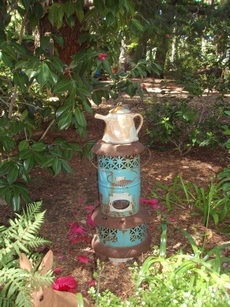 ited bordered their flower beds with small brightly glazed pots overturned on river cobbles. The effect was pure whimsy. I never get tired of the chair-turned-planter whenever I see it in a garden. You can use either a wooden or an ornamental metal chair as long as you can remove the center of the seat so a pot can rest on the frame. Fill with perennial purple wave petunias, red verbena and white geraniums for a July 4th tribute. Shade lovers could use Get Me lilac campanula, Goldilocks lysimachia and dwarf fuchsia’s instead.
ited bordered their flower beds with small brightly glazed pots overturned on river cobbles. The effect was pure whimsy. I never get tired of the chair-turned-planter whenever I see it in a garden. You can use either a wooden or an ornamental metal chair as long as you can remove the center of the seat so a pot can rest on the frame. Fill with perennial purple wave petunias, red verbena and white geraniums for a July 4th tribute. Shade lovers could use Get Me lilac campanula, Goldilocks lysimachia and dwarf fuchsia’s instead. 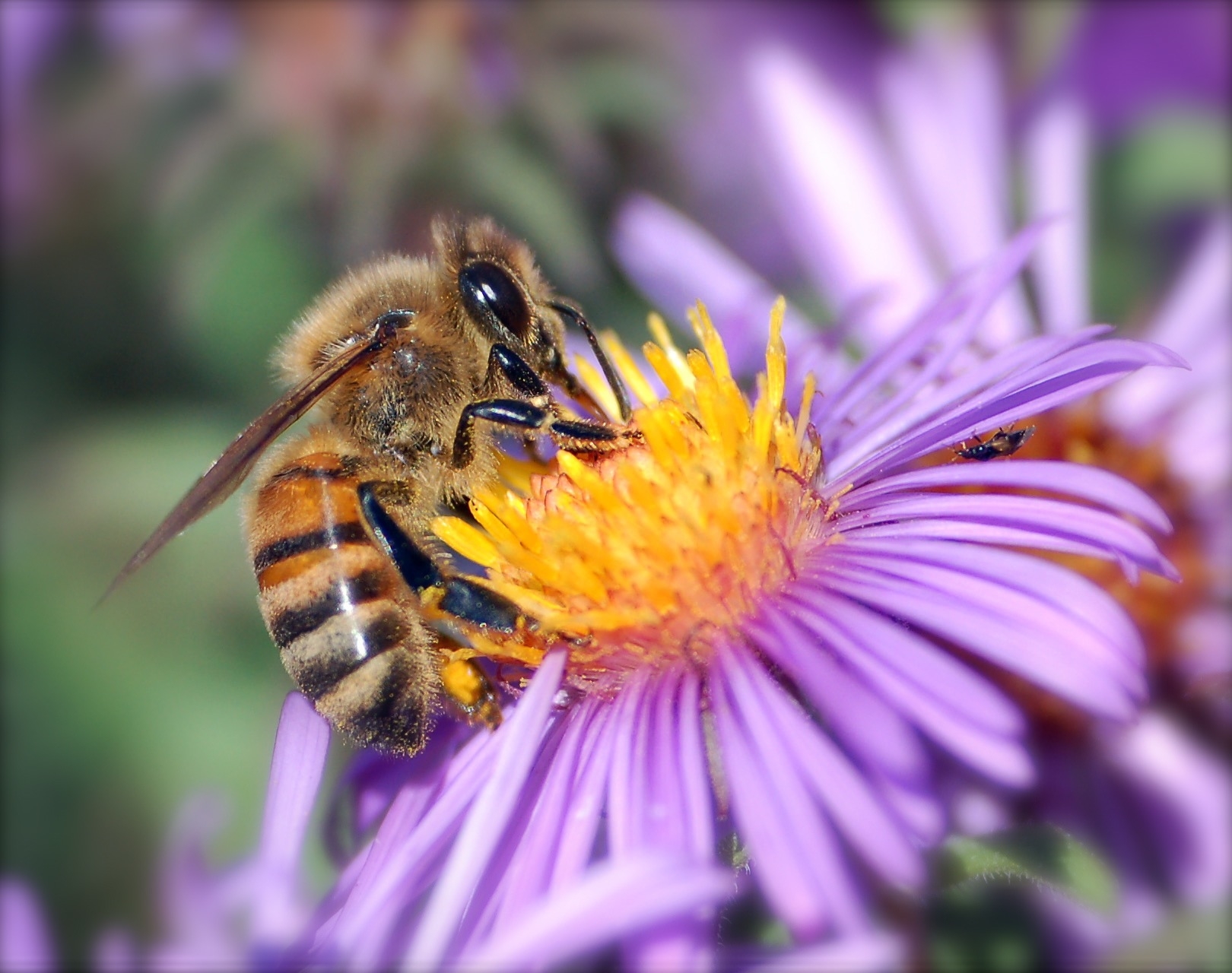 pollinate your plants.
pollinate your plants.